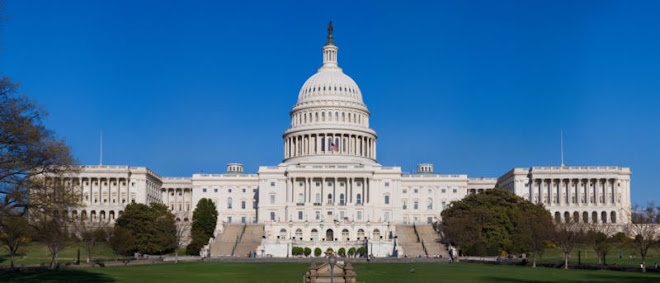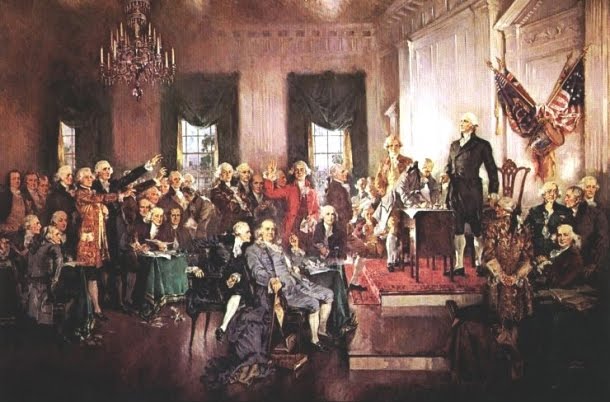From The CATO Institute:
Early Returns on ObamaCare Are Disappointing
by Michael D. Tanner
Michael D. Tanner is a senior fellow at the Cato Institute and the author of Bad Medicine: A Guide to the Real Costs and Consequences of the New Health Care Law.
Added to cato.org on July 26, 2010
This article appeared in The Richmond Times-Dispatch on July 25, 2010.
PRINT PAGE CITE THIS Sans Serif Serif Share with your friends:
ShareThisObamacare was conceived around three goals: (1) provide health insurance coverage for all Americans; (2) reduce insurance costs for individuals, businesses, and government; and (3) in crease the quality of health care and the value received for each dollar of health care spending.
Just over 100 days after the law was signed, the evidence shows it is failing on each and every one of those goals.
Supporters also promised that the legislation would not increase the federal budget deficit or unduly burden the economy. And, of course, we were repeatedly promised that "if you like your health care plan, you'll be able to keep your health care plan, period." On these grounds too, the Patient Protection and Affordable Care Act is failing.
The legislation comes closest to success on the issue of expanding insurance coverage.
It is becoming increasingly clear that millions of Americans will not be able to keep their current coverage.
Millions more Americans will indeed receive coverage under the law — mostly through an expansion of subsidies and other government programs, with nearly half of the newly insured coming through the troubled Medicaid program. Thus, how much the law expands access to private insurance is still an open question. And still, at least 21 million Americans will be uninsured by 2019. The new law is therefore an improvement over the status quo — but a surprisingly modest one.
The law also makes some modest insurance reforms that will prohibit some of the industry's more unpopular practices. However, those changes will come at the price of increased insurance costs, especially for younger and healthier individuals, and reduced consumer choice.
Meanwhile, the legislation is a disaster when it comes to controlling costs.
The administration's own chief health care actuary reports that the law will actually increase U.S. health care spending. Accurately measured, the Patient Protection and Affordable Care Act will cost more than $2.7 trillion over its first 10 years of full operation. This does not even include more than $4.3 trillion in costs shifted to businesses, individuals, and state governments.
It is not just government that will face higher costs under this law. In fact, most American workers and businesses will see little or no change in their skyrocketing insurance costs, while millions of others — including younger and healthier workers and those who buy insurance on their own through the nongroup market — will see their premiums go up even faster under the legislation.
Before health care reform passed, the Congressional Budget Office warned that health insurance premiums could double in the next six years. As a result of this bill, CBO's latest analysis warns that health insurance premiums will ... double in the next six years.
Individuals who purchase insurance on their own could see their premiums rise 13 percent faster than if the legislation had never passed. According to the RAND Corp., younger and healthier Americans could see an increase in their premiums of 17 percent. Other studies put that increase even higher.
It is also becoming increasingly clear that millions of Americans will not be able to keep their current coverage.
Seniors with Medicare Advantage and workers with health savings accounts are the most likely to be forced out of their current plans. A leaked administration memorandum warns that more than two-thirds of companies could be forced to change their current coverage. For small businesses, the total could reach 80 percent.
Michael D. Tanner is a senior fellow at the Cato Institute and the author of Bad Medicine: A Guide to the Real Costs and Consequences of the New Health Care Law.
More by Michael D. TannerThe law's individual mandate continues to pose an especial threat to people being able to keep their current coverage. Even if consumers are perfectly happy with their current coverage, strict government requirements under Obamacare will eventually shut down many of the plans now available.
All of this represents an enormous price to pay in exchange for the law's small increases in insurance coverage.
Opponents of this bill warned that it represents a fundamental shift in the debate over how to reform health care. It rejects consumer-oriented reforms in favor of a top-down, command-and-control, government-imposed solution. It sets the stage for potentially increased government involvement, and raises the specter, ultimately, of a government-run single-payer system down the road.
But increasingly, the evidence suggests that it is a failure even by the standards of its supporters
A READER ON THE STATE OF THE POLITICAL DECAY AND IDEOLOGICAL GRIDLOCK BETWEEN ONE GROUP WHO SEEK TO DESTROY THE COUNTRY, AND THOSE WHO WANT TO RESTORE IT.
The Rise and Fall of Hope and Change




Alexis de Toqueville
The American Republic will endure until the day Congress discovers that it can bribe the public with the public's money.
Alexis de Tocqueville
Alexis de Tocqueville
The United States Capitol Building

The Constitutional Convention

The Continental Congress

George Washington at Valley Forge



No comments:
Post a Comment